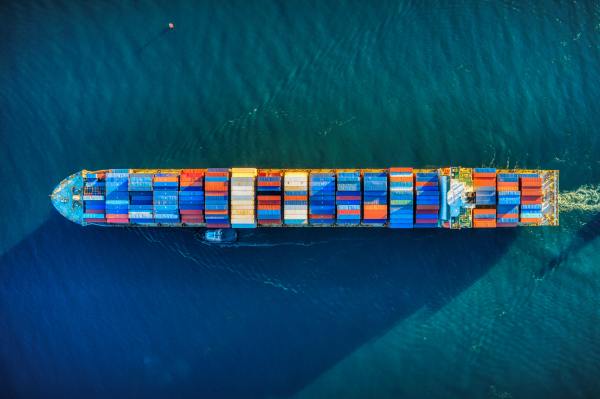Maritime industry navigates rising digitalization tides

Be it the Ever Given episode in the Suez Canal or the 100+ ships waiting off LA/Long Beach or fears that the supply chain crisis would perturb Christmas, shipping has seldom been so much in the public eye. Maritime tech has seen unprecedented activity over the past year, with a surge in deals. Start-ups received $620 billion in funding last year, by far the highest annual total ever.
Substantial funding got routed to maritime tech targeting three dominant themes — visibility, digitalization and decarbonization. Visibility covers ship tracking for containers and other vessel types (by companies such as MarineTraffic and CargoMetrics) and provides market intelligence for chartering, trading and investing. The next big maritime tech pitch is digitalization: using technology to improve business processes and decision-making. The third big pitch focuses on fuel efficiency and decarbonization.
Globally, the shipping industry is responsible for 90% of trade. Large shipping losses are at their lowest levels since 2000, with declines of 50%+ year-on-year. While encouraging, the overall number of reported shipping incidents shows little decline – less than 1% year-on-year. An analysis of 15,000 marine liability insurance claims reveals human error to be a primary factor in 75% of the value of all claims analyzed. Though safety-enhancing technology has been a positive factor in improving ship safety and claims, accidents continue to happen.
Within marine insurance, seemingly little has changed, though the shipping industry itself has evolved considerably. While the technology and regulation are newer, the underlying processes are relatively unchanged. However, the simmering under the surface is palpable. The high-cost manual processes are under stress, amplified by the prolonged margin pressure. Meanwhile, there is greater impetus for change, as consumers, governments and regulators take an active interest in the sector’s environmental and societal footprint.
Some changes underway include:
- Rating Changes: For decades, marine policies have been rated on risk, using standard factors – vessel type, age, flag, tonnage. With behavior data added, one can determine factors that cause claims and potentially intercept, mitigate and reduce the claim severity.
- On-demand coverage: Policies that provide elastic coverage are needed. A simple example is war zone coverage. Today, this requires the customer to notify the broker, who, in turn, notifies the insurer that war zone coverage is required. This and other on-demand coverages can be automatically triggered using sensor and related technologies.
- Real-time placement platform for commercial risks: Examples include Lloyds PPL and solutions from EY, B3i, etc. The Internet of Things and connected technologies mean that mobile devices and sensors offer up constant streams of data. A real-time platform also allows users to extract and unlock behavioral insight from assets, leading to better products, pricing and profits.
Market Action in Marine Insurtech:
- Allianz Global Corporate & Specialty launched an online marine insurance service designed for UK leisure vessel owners in collaboration with Visicover. Visicover’s web-based service lets customers self-administer their cover and personalize it according to specific needs, enabling new approaches to risk rating.
- Redkik is offering on-demand, per shipment insurance, underwritten by Chubb, for instant premium quotations at the time of freight being booked. The SaaS solution for cargo insurance is now available for transport intermediaries to distribute in Sweden. This follows a successful launch in the US in 2021.
Marine insurers can strategize their future play – as pure risk carriers or trusted partners offering comprehensive services. The players are well equipped to advance to the position of trusted partners. Based on decades of experience in working closely with clients to handle complex risks, they are in close touch with the needs of shipping and logistics companies. By drawing on this knowledge and building on the trust earned, digitalized and personalized customer journeys portend the way forward. The prerogative is to embrace digitalization in mindset and business models.
You get 3 free articles on Daily Fintech. After that you will need to become a member for just US$143 a year (= $0.39 per day) and get all our fresh content and our archives and participate in our forum.
#marineinsurance #Redkik allianz Default/Ignore digitalization InsurTech
